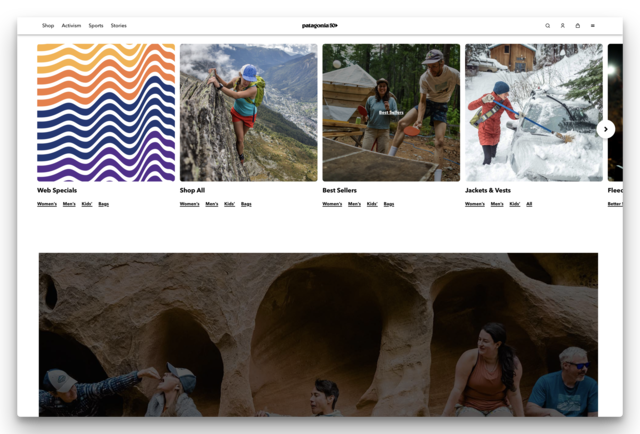How To Build A Strong Brand Identity

Steve Jobs, the co-founder and former CEO of Apple, was known for his emphasis on the importance of branding and marketing in building successful products and companies.
Jobs famously said,
“Marketing is about values. It’s a complicated and noisy world, and we’re not going to get a chance to get people to remember much about us. No company is. So we have to be really clear about what we want them to know about us.”
A strong brand is essential
Jobs believed that a strong brand was essential for creating a loyal customer base and driving business success. He famously led Apple’s marketing efforts to create a distinct brand identity and visual language that was consistent across all of its products and marketing materials.
Jobs also emphasised the importance of storytelling in creating a strong brand identity, stating that “The most powerful person in the world is the storyteller.”
“The most powerful person in the world is the storyteller.”
Overall, Steve Jobs recognized the crucial role that branding and marketing play in building successful businesses, and he prioritised these efforts in his leadership of Apple. His focus on creating a distinct and consistent brand identity has been credited with helping Apple become the most valuable company in the world today.
Taking stock
You must have a clear understanding of your brand values, mission, and target audience to create a brand identity that resonates with them. Your brand identity should be authentic and consistent across all of your marketing materials, and it should be told in a way that is compelling and memorable.
Brand identity is the cornerstone of any successful business. It’s the way in which your company is perceived by your target audience, and it’s what sets you apart from your competitors. Building a strong brand identity takes time and effort, but it’s an investment that pays off in the long run.
In this post, we’ll explore how to build a strong brand identity that resonates with your target audience.
So, what is brand identity?
First, it’s important to understand what brand identity is.
Brand identity is the visual and emotional representation of your brand. It encompasses everything from your logo, colour palette, and typography, to your brand voice, values, and mission. It’s the way in which your brand communicates with your target audience, and it’s what makes your brand unique.
Start with the basics
To build a strong brand identity, you need to start with the basics.
This means defining your brand values, mission, target audience, personality and promise. Your brand values are the principles that guide your brand, and they should be evident in everything you do. Your mission is your purpose, and it should be clear and concise. Your target audience is the group of people you want to reach with your brand, and you need to understand them in order to create a brand identity that resonates with them. Your personality is a unique set of characteristics that make you unique among your peers, and your promise is what customers expect you to deliver.
Here are the top 5 considerations when building a strong brand concerning brand values, mission, and target audience, along with real world examples:
- Brand Values: It is important for brands to have clear values that align with their mission and resonate with their target audience. For example, Patagonia is a clothing company that has built its brand around environmental activism and sustainability. Their values are reflected in everything they do, from the materials they use to the causes they support.
- Mission Statement: A clear and compelling mission statement is crucial to building a strong brand. The mission statement should be authentic, inspiring, and relevant to the target audience. For example, Tesla‘s mission statement is “to accelerate the world’s transition to sustainable energy.” This mission statement reflects the company’s commitment to sustainability and innovation, which are core values of their brand.
- Target Audience: Understanding the target audience is essential for building a strong brand. Brands should develop a deep understanding of their audience’s needs, desires, and values, and tailor their messaging accordingly. For example, Glossier is a beauty brand that has built its brand around inclusivity and self-expression. They understand their audience of millennial women and have created products and messaging that speaks directly to them.
- Brand Personality: The personality of a brand is its unique set of characteristics that differentiate it from other brands. Brands should develop a personality that aligns with their values and resonates with their target audience. For example, Wendy’s is a fast-food chain that has built its brand around a sassy, irreverent personality. This personality has helped them stand out in a crowded market and connect with their target audience.
- Brand Promise: The brand promise is what the brand delivers to its customers. It should be clear, concise, and relevant to the target audience. For example, Airbnb promises to provide unique, local experiences that allow travellers to “belong anywhere.” This promise reflects the brand’s commitment to authentic and personalised travel experiences.
Visuals
Once you’ve defined your brand values, mission, target audience, personality and promise, it’s time to start creating your visual identity. This includes your logo, colour palette, and typography. Your logo is the visual representation of your brand, and it should be simple, memorable, and unique. Your colour palette should reflect your brand values and resonate with your target audience. Typography is also important, as it can convey your brand’s personality and tone.
When creating your visual identity, it’s important to be consistent. Your logo, colour palette, and typography should be used consistently across all of your marketing materials, from your website to your social media accounts. This consistency helps to reinforce your brand identity and make it more recognizable to your target audience.
A great logo
A great logo is an important part of building a strong brand identity. Here are the top five considerations to keep in mind when designing a great logo:
- Simplicity: A great logo should be simple and easy to recognize. It should be easy to read and understand at a glance, and should not be cluttered with unnecessary details or text. e.g. The simplicity of the Nike Swoosh logo is instantly recognizable and has become synonymous with the brand.
- Relevance: A great logo should be relevant to the brand it represents. It should reflect the values and mission of the brand, and should be appropriate for its target audience. e.g. The Twitter logo is relevant to the brand’s social media platform and target audience, with its iconic bird icon reflecting the brand’s messaging and positioning.
- Distinctiveness: A great logo should be distinctive and memorable. It should be unique enough to stand out from other logos, and should be instantly recognizable as belonging to the brand it represents. e.g. A great logo should be memorable and easy to recall. The Apple logo is a great example of a memorable logo that has become synonymous with the brand.
- Scalability: A great logo should be scalable, meaning it should be able to be resized and used in a variety of formats and applications, from small social media icons to large billboards. e.g. The FedEx logo is versatile and works well in a variety of contexts, from advertising to packaging.
- Timelessness: A great logo should be timeless and able to stand the test of time. It should not be too trendy or rely on current design fads that may quickly become outdated. e.g. The Coca-Cola logo is a timeless classic that has remained largely unchanged for over a century.
Also Read: The Good Brand Checklist No.5 - A good logo that we use consistently.
Brand imagery/photography
Brand imagery is an important aspect of building a strong brand identity. Here are the top five considerations to keep in mind when developing brand imagery:

Image from Patagonia website
- Consistency: Brand imagery should be consistent across all channels and touch-points. This includes social media, advertising, website, packaging, and other brand collateral. Consistent imagery helps to build brand recognition and reinforce the brand’s message. e.g. Apple uses consistent imagery across all touchpoints, from their sleek product design to their minimalist website design.
- Authenticity: A great brand imagery should be authentic and reflect the brand’s values and personality. e.g. Patagonia is a great example of a brand that uses authentic imagery to connect with their target audience and promote their commitment to sustainability and the environment.
- Emotional Connection: Brand imagery should evoke an emotional connection with the audience. It should be visually appealing and memorable, creating positive feelings and associations with the brand. e.g. Coca-Cola’s “Share a Coke” campaign used personalised bottles and cans with customer names to evoke emotions and promote sharing and connection.
- Uniqueness: Brand imagery should be unique and stand out from competitors. It should be distinct and recognizable, setting the brand apart from others in the same space. e.g. Dollar Shave Club’s brand imagery often features humorous and irreverent imagery, differentiating them from competitors in the men’s grooming space.
- Storytelling: Great brand imagery should tell a story and communicate the brand’s message in a compelling way. Airbnb’s brand imagery, which often features stunning photos of unique and exotic destinations, tells a story of adventure and exploration, connecting with their target audience’s desire for travel and new experiences.
- Adaptability: Brand imagery should be adaptable to different channels and mediums. It should be designed to work across different platforms and mediums, from print to digital, and should be able to be resized and repurposed as needed. e.g. National Geographic’s brand photography is versatile and adaptable, with images that can be repurposed for different mediums and platforms, from print magazines to social media.
Brand colours
Brand colours are an important aspect of building a strong brand identity. Here are the top five considerations to keep in mind when selecting brand colours:

Tiffany & Co blue
- Consistency: Brand colours should be consistent across all channels and touchpoints. This includes social media, advertising, website, packaging, and other brand collateral. Consistent colours help to build brand recognition and reinforce the brand’s message. e.g. Coca-Cola is a great example of a brand that has consistent use of brand colours across all touchpoints. The brand’s signature red colour is used consistently in advertising, packaging, and on their website.
- Relevance: Brand colours should be relevant to the brand and its target audience. It should reflect the brand’s personality, values, and mission. It should also be relevant to the audience’s interests and preferences. e.g. Whole Foods Market is an example of a brand that uses brand colours that are relevant to their target audience. Their green colour palette reflects the brand’s commitment to organic, natural products.
- Emotion: Brand colours should evoke an emotional response from the audience. Colours have the power to convey emotions and set the tone for the brand. It’s important to consider the psychology of colour and how it relates to the brand’s message. e.g. Cheerios is a brand that uses colours to evoke emotions. Their yellow packaging and logo colour conveys happiness and positivity, while their blue box for their Honey Nut Cheerios cereal conveys calmness and serenity.
- Differentiation: Brand colours should be unique and stand out from competitors. It should be distinct and recognizable, setting the brand apart from others in the same space. e.g. Tiffany & Co. is an example of a brand that uses a unique colour to differentiate itself from competitors. The brand’s iconic blue colour is instantly recognizable and sets it apart from other jewelry brands.
- Flexibility: Brand colours should be flexible enough to be used in a variety of applications. It should be able to be used across different mediums, from print to digital, and be able to be adapted for different products or campaigns. e.g. Nike is a brand that has a flexible coloir palette that can be used across different products and campaigns. The brand’s signature swoosh logo is often used in different colours depending on the product, and the brand also uses a variety of other colours in their marketing materials.
Typography
Good typography is also important for a strong brand. Here are the top 5 considerations to keep in mind when selecting a typeface for your brand identity and communications.
- Legibility: Brand typography should be legible and easy to read, even at small sizes or from a distance. A great example of this is the typography used by FedEx. The brand’s typography is clean and simple, with a bold and easily recognizable “Ex” element.
- Personality: Brand typography should reflect the personality and values of the brand. A great example of this is the typography used by Coca-Cola. The brand’s typography is playful and fun, with a unique cursive script that is instantly recognizable and reflects the brand’s emphasis on happiness and positivity.
- Consistency: Brand typography should be consistent across all touchpoints and mediums. A great example of this is the typography used by Apple. The brand’s typography is clean and simple, with a focus on minimalism and modern design. This typography is used consistently across all of Apple’s touchpoints, from its products to its marketing materials.
- Versatility: Brand typography should be versatile and adaptable to different mediums and platforms. A great example of this is the typography used by Airbnb. The brand’s typography is simple and clean, with a focus on readability and versatility. This typography is used across different platforms, from the Airbnb app to its social media channels.
- Uniqueness: Brand typography should be unique and stand out from competitors. A great example of this is the typography used by The New York Times. The brand’s typography is classic and elegant, with a unique serif font that reflects the brand’s emphasis on quality journalism and authoritative reporting.
Brand Voice
In addition to your visual identity, your brand voice is also an important component of your brand identity.
Your brand voice is the tone and style in which you communicate with your target audience. It also should be consistent across all of your marketing materials, and it should reflect your brand values and personality. Whether your brand voice is playful, serious, or somewhere in between, it should be authentic and resonate with your target audience.
Here are the top 5 considerations for brand voice, along with examples in the real world:
- Tone: The tone of brand voice should reflect the personality and values of the brand. For example, Nike’s brand voice is inspirational and motivational, reflecting the brand’s emphasis on personal achievement and empowerment.
- Consistency: Brand voice should be consistent across all touchpoints and mediums. For example, Mailchimp‘s brand voice is playful and friendly, and this tone is consistent across all of the brand’s touchpoints, including its website, email campaigns, and social media channels.
- Audience: Brand voice should be tailored to the target audience. For example, the brand voice of Old Spice is humorous and irreverent, reflecting the brand’s target audience of young men.
- Language: Brand voice should use language that is clear, concise, and easy to understand. For example, the brand voice of Google is simple and straightforward, using language that is easy for users to understand and follow.
- Authenticity: Brand voice should be authentic and true to the brand’s values and personality. For example, the brand voice of Patagonia is authentic and honest, reflecting the brand’s commitment to environmental sustainability and ethical business practices.
Storytelling
Another important aspect of building a strong brand identity is storytelling. Your brand story is the narrative that explains who you are, what you do, and why you do it. It’s the story that connects your brand with your target audience on an emotional level. Your brand story should be authentic, compelling, and memorable.
Here are the top 5 considerations for brand storytelling, along with examples in the real world:
- Authenticity: The most effective brand storytelling is authentic and true to the brand’s values and personality. For example, the brand storytelling of TOMS shoes is authentic, reflecting the brand’s commitment to social responsibility and ethical business practices.
- Emotion: Brand storytelling should evoke emotion in the audience, whether it’s through humour, inspiration, or empathy. For example, the brand storytelling of Dove’s “Real Beauty” campaign evokes empathy by challenging traditional beauty standards and celebrating diverse body types.
- Purpose: Brand storytelling should have a clear purpose and message that is aligned with the brand’s values and mission. For example, the brand storytelling of Patagonia is purpose-driven, reflecting the brand’s commitment to environmental sustainability and ethical business practices.
- Relevance: Brand storytelling should be relevant to the audience and resonate with their interests and values. For example, the brand storytelling of Airbnb is relevant to travellers, highlighting unique travel experiences and cultural immersion.
- Cohesion: Brand storytelling should be cohesive and consistent across all touchpoints and mediums. For example, the brand storytelling of Coca-Cola is cohesive, reflecting the brand’s core values of happiness and optimism across all of its advertising campaigns, social media presence, and brand messaging.
Authenticity
To tell your brand story effectively, it’s important to be clear about your brand values and mission. You should also be authentic and transparent in your communications with your target audience. Your brand story should be consistent across all of your marketing materials, and it should be told in a way that resonates with your target audience.
Here are the top 5 considerations for brand authenticity, along with examples of each in the real world:
- Consistency: Consistency is key to brand authenticity. A brand should always communicate a consistent message across all channels and touchpoints. For example, the outdoor brand Patagonia is consistent in its messaging, using its brand storytelling to highlight its commitment to sustainability and ethical practices.
- Transparency: A brand should be transparent about its operations, policies, and practices. For example, Everlane, a sustainable fashion brand, is transparent about its pricing, production process, and supply chain.
- Originality: A brand should be original in its approach and offerings, distinguishing itself from competitors. For example, Warby Parker, a glasses company, offers a unique and affordable approach to eyewear, setting itself apart from traditional eyewear retailers.
- Purpose: A brand should have a clear purpose and mission that aligns with its values. For example, the cosmetics brand Glossier has a clear mission to empower women and celebrate individuality, reflected in its brand messaging and products.
- Humanization: A brand should humanise itself by connecting with its audience on a personal level. For example, the fast-food chain Wendy’s is known for its witty and humorous social media presence, connecting with customers on a relatable level.
Good things take time
Finally, building a strong brand identity requires ongoing effort. Your brand identity should evolve over time as your business grows and changes. You should regularly review your brand identity to ensure that it still reflects your brand values and resonates with your target audience.
Here are the top 5 considerations that speak to the fact that strong brands take time to build, along with examples of each in the real world:
- Patience: Building a strong brand takes time and patience. Brands should be willing to invest in the long-term and not expect overnight success. For example, Nike’s “Just Do It” campaign was launched in 1988, but it took several years for the campaign to become iconic and synonymous with the brand.
- Consistency: Consistency is key to building a strong brand over time. Brands should be consistent in their messaging, values, and visual identity across all touchpoints. For example, Coca-Cola has maintained a consistent brand identity and messaging for over a century, helping to establish it as one of the world’s most recognizable brands.
- Adaptability: While consistency is important, brands also need to be adaptable and evolve over time to stay relevant. For example, the tech company Apple has adapted its brand messaging and visual identity over the years, while still maintaining its core brand values.
- Customer focus: Building a strong brand takes time because it requires a deep understanding of the customer and their needs. Brands should focus on building strong relationships with their customers by delivering value and meeting their needs. For example, Amazon has built a strong brand over time by prioritising customer service and convenience.
- Persistence: Building a strong brand requires persistence and a willingness to overcome challenges and setbacks. For example, Airbnb faced numerous legal challenges in its early days, but the brand persisted and has since become a leader in the hospitality industry.
Summing up
In conclusion, building a strong brand identity is essential for any successful business. It requires defining your brand values, mission, and target audience, creating a visual identity that is consistent and resonates with your target audience, developing a brand voice that reflects your brand personality, and telling a compelling brand story. With ongoing effort and attention, you can build a strong brand identity that sets your business apart and resonates with your target audience.
References:
-
Steve Jobs on branding and marketing:
- Isaacson, W. (2011). Steve Jobs. Simon & Schuster.
- “How to Build a Strong Brand Identity” by Neil Patel, https://neilpatel.com/blog/how-to-build-a-strong-brand-identity/
- “Building a Strong Brand Identity: A Practical Guide for Small Business Owners” by Michael Guta, https://smallbiztrends.com/2019/06/building-a-strong-brand-identity.html
- “Brand Identity: The Complete Guide for 2021” by Mary Fernandez, https://optinmonster.com/brand-identity/
- “Why Brand Identity Is Important For Small Businesses” by John Rampton, https://www.forbes.com/sites/johnrampton/2016/05/27/why-brand-identity-is-important-for-small-businesses/
- “The Importance of Storytelling in Building Your Brand Identity” by Rachel Cautero, https://www.entrepreneur.com/article/348228
-
Defining your brand values, mission, and target audience:
- Keller, K. L. (2013). Strategic brand management: Building, measuring, and managing brand equity (4th ed.). Pearson.
- Aaker, J. (1996). Building strong brands. Free Press.
- Fuchs, C., Prandelli, E., & Schreier, M. (2010). The psychological effects of empowerment strategies on consumers’ product demand. Journal of Marketing, 74(6), 65-79.
-
Creating a consistent visual identity and brand voice:
- Scott, D. M. (2015). The new rules of marketing and PR: How to use social media, online video, mobile applications, blogs, news releases, and viral marketing to reach buyers directly. John Wiley & Sons.
- Lury, C. (2011). Brands: The logos of the global economy. Routledge.
- Giebelhausen, M. D., Robinson, S. R., & Sirianni, N. J. (2014). Differentiating without alienating: An empirical study of the effect of organizational culture on consumer perceptions of distance in symbolic brand positioning. Journal of Consumer Psychology, 24(2), 179-193.
-
Telling a compelling brand story:
- Holt, D. B. (2016). Branding in the age of social media. Harvard Business Review, 94(3), 40-50.
- Escalas, J. E. (2004). Narrative processing: Building consumer connections to brands. Journal of Consumer Psychology, 14(1-2), 168-180.
- Thompson, C. J. (2009). The nature and scope of consumer mythology. Journal of Consumer Research, 36(5), 686-707.
How To Build A Strong Brand Identity
Brand identity is the cornerstone of any successful business. Let’s explore how to build a strong brand identity that resonates with your target audience.
